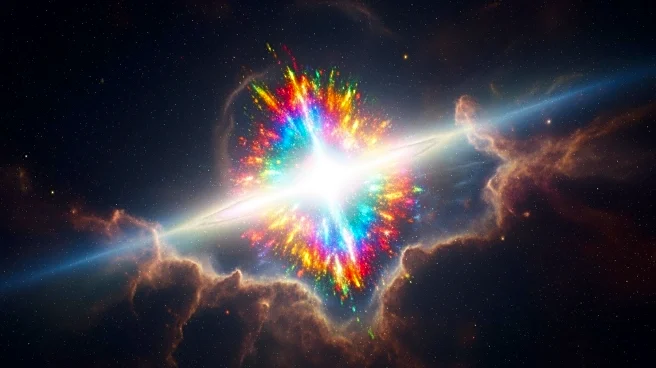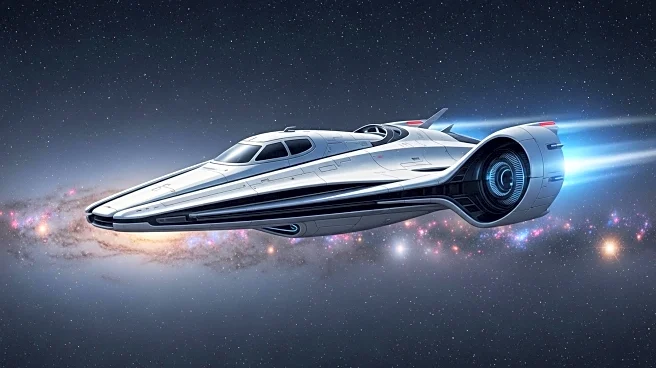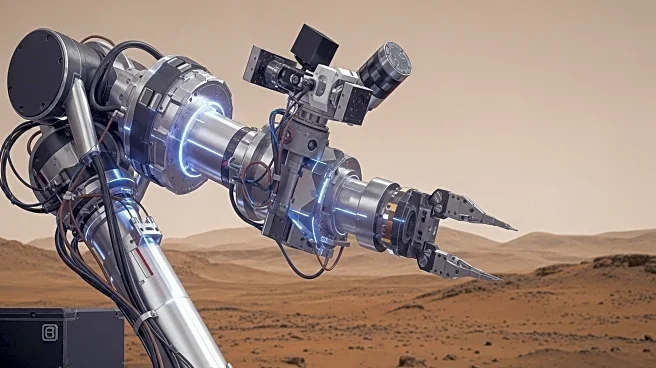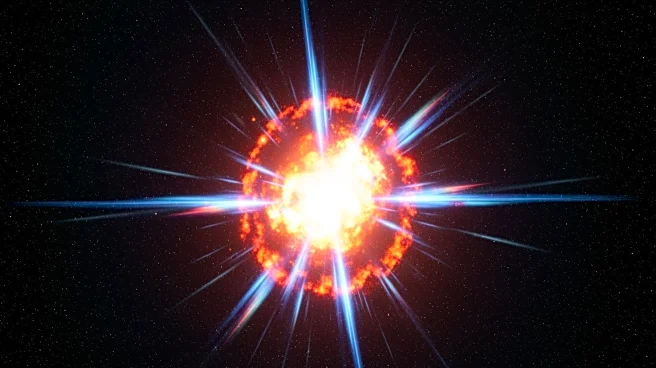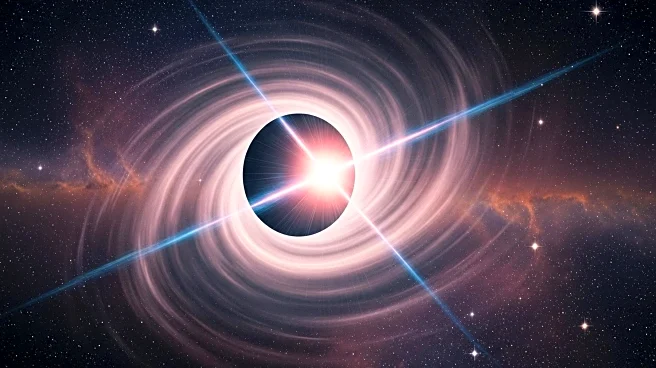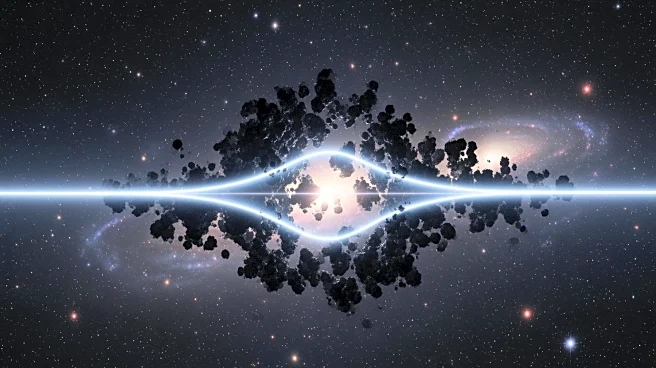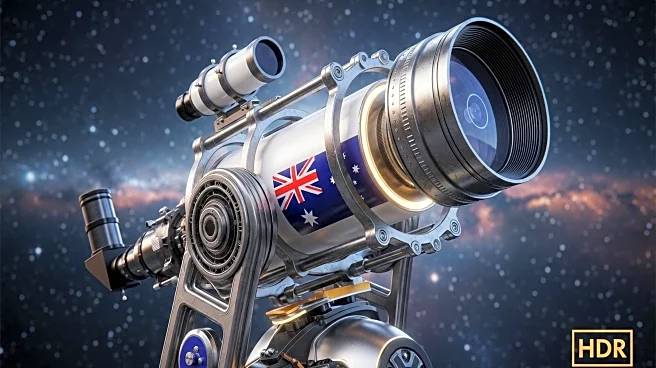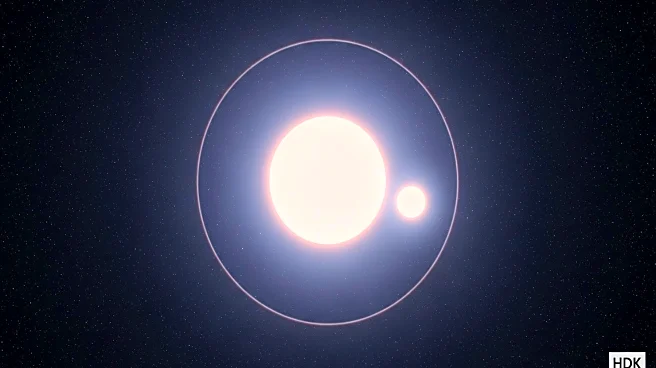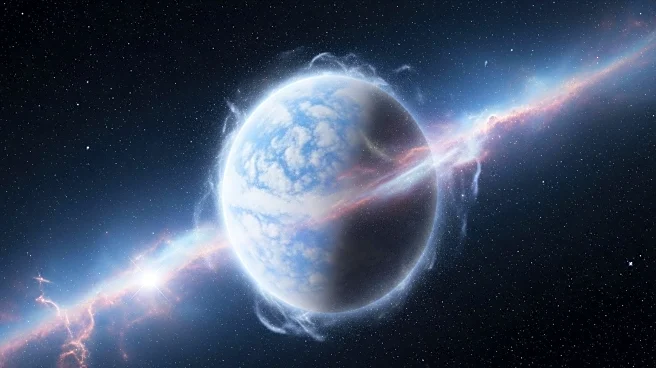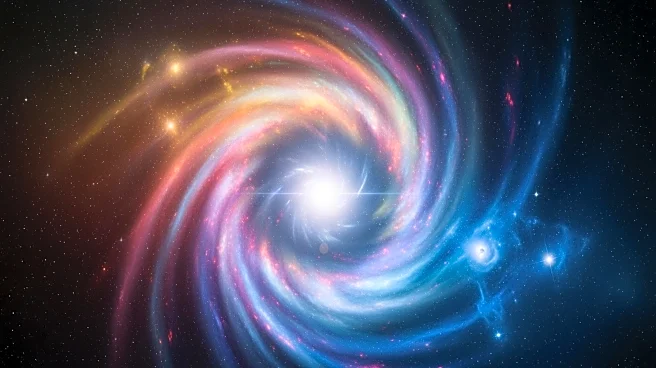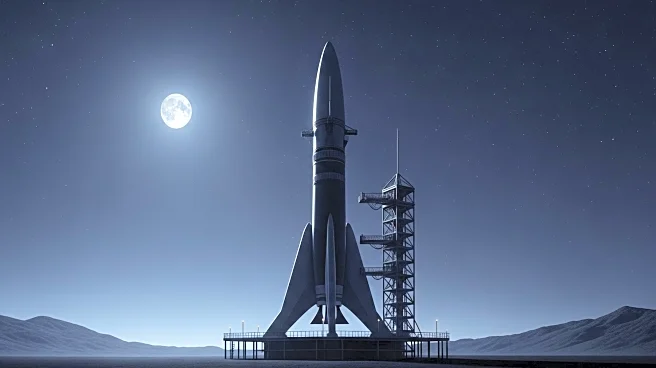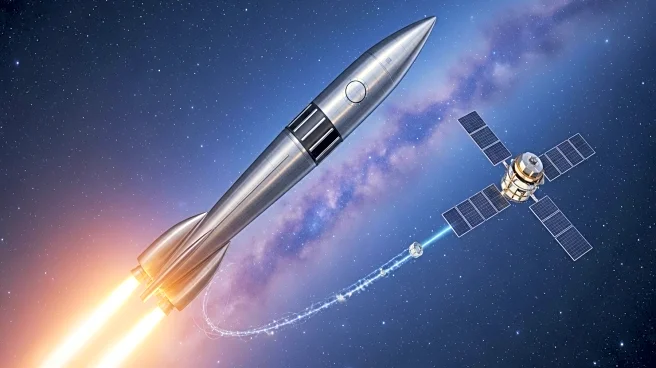What's Happening?
Astronomers have recorded the longest gamma-ray burst ever, labeled GRB 250702B, which lasted approximately 7 hours. Detected by NASA's Fermi telescope on July 2, 2025, this event challenges existing theories about gamma-ray bursts, which are typically
short-lived cosmic explosions. The burst's duration and characteristics suggest it may not have originated from a collapsing star, as is common with gamma-ray bursts. Instead, researchers propose that a preexisting black hole may have plunged into a partner star, creating jets from deep within. The burst's light curve and spectrum indicate a compact engine, likely a stellar mass black hole, rather than a supermassive one. Follow-up spectroscopy with the Webb Telescope measured a redshift of 1.036, confirming the burst's distance and energy, but no accompanying supernova was observed.
Why It's Important?
The discovery of GRB 250702B is significant as it challenges the current understanding of gamma-ray bursts and their origins. Typically, these bursts occur when a massive star collapses into a black hole, but the unprecedented duration of GRB 250702B suggests a different mechanism may be at play. This could lead to new insights into cosmic events and the behavior of black holes. The findings may impact astrophysical models and theories, potentially altering the way scientists study and interpret cosmic phenomena. The absence of a supernova and the burst's location away from the host galaxy's center further complicate existing theories, suggesting alternative pathways for such events.
What's Next?
Further research and observation are needed to understand the exact nature of GRB 250702B and similar ultra-long gamma-ray bursts. The Rubin Observatory's upcoming sky surveys may provide more data, helping astronomers identify late-time signatures and trigger space telescopes for detailed study. Continued crosschecking with multiple instruments, including gamma rays, X-rays, and infrared spectra, will be crucial in confirming the mechanisms behind these bursts. The study's authors suggest that helium mergers could be responsible for some ultra-long bursts, favoring star-forming regions rich in massive binaries. This could lead to a reevaluation of cosmic event classifications and the development of new models.
Beyond the Headlines
The discovery of GRB 250702B highlights the importance of interdisciplinary research and the use of multiple observational tools in astrophysics. It underscores the need for continuous monitoring and rapid response capabilities in space telescopes to capture transient cosmic events. The findings may also influence the search for extraterrestrial life, as understanding cosmic phenomena is crucial in assessing the habitability of distant planets. Additionally, the study raises questions about the role of dust and other cosmic materials in obscuring or altering the visibility of such events, which could have implications for future astronomical observations.
